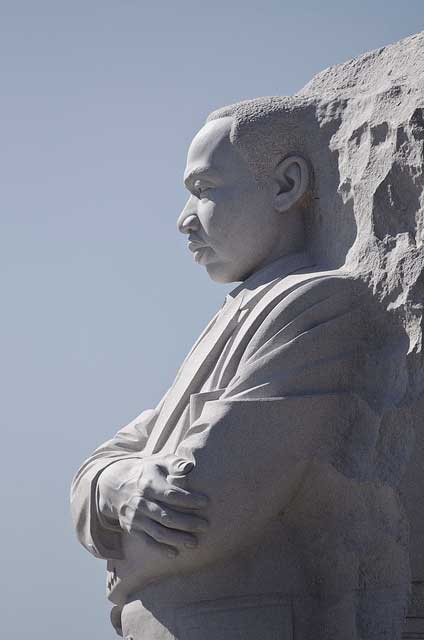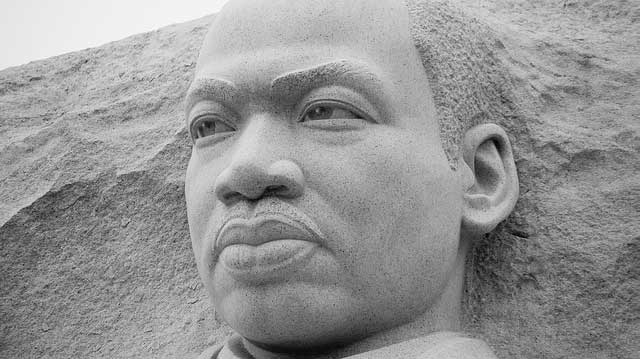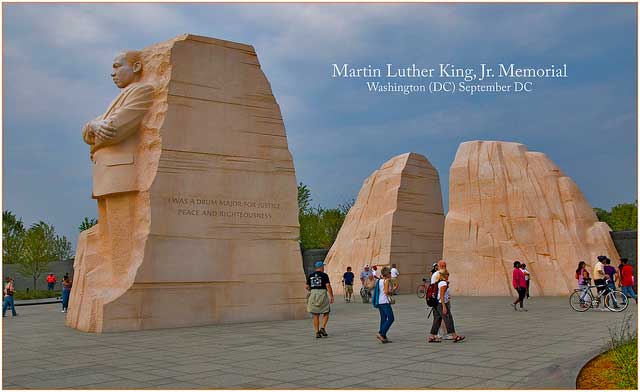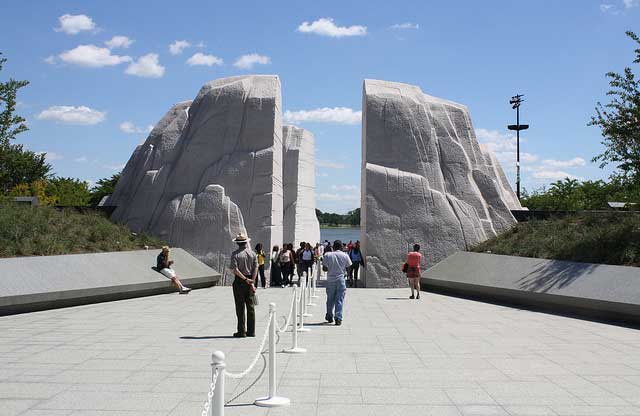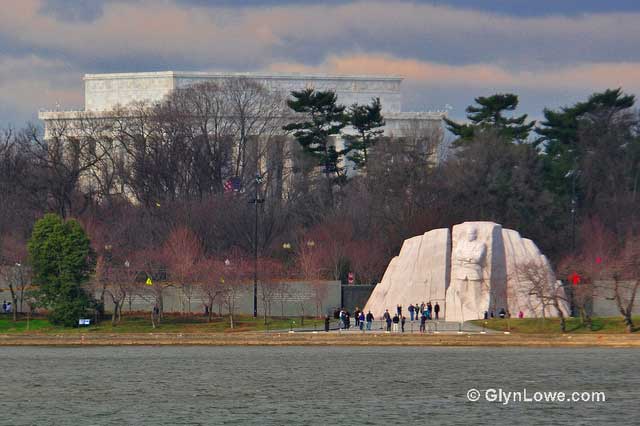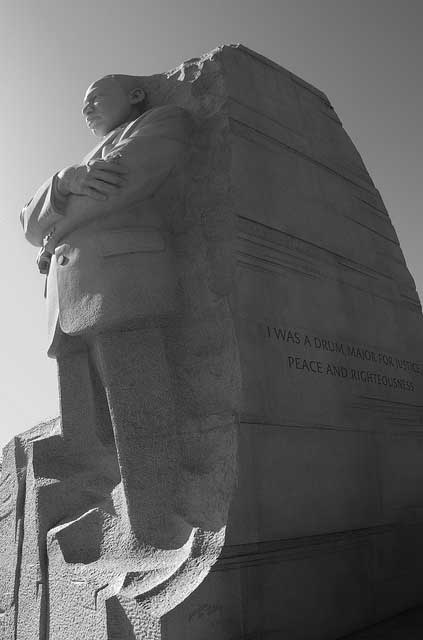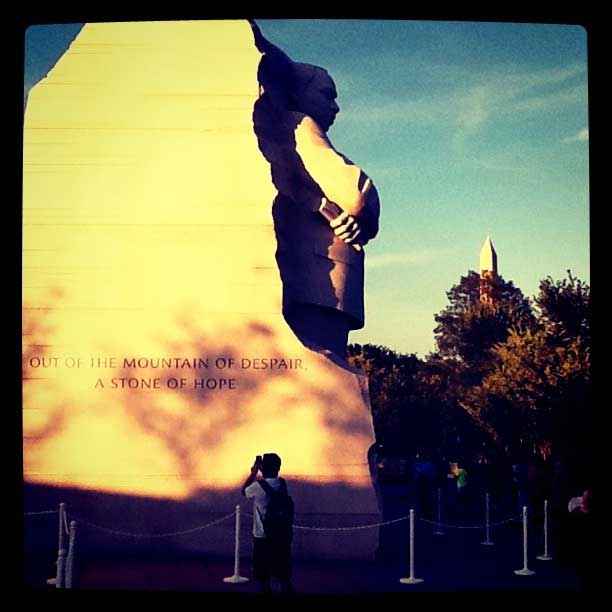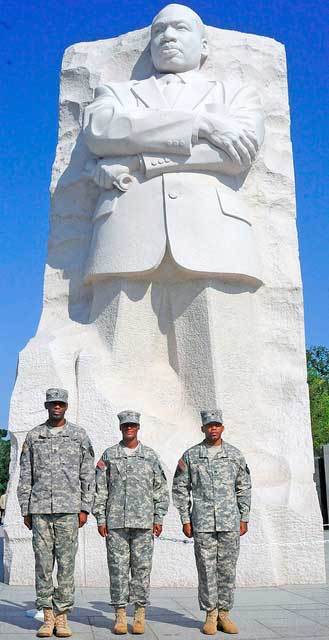It is wonderful that an African American leader is honored on the Mall, near the Lincoln, Jefferson and Franklin Roosevelt memorials. But it means even more that a nonviolent leader, a man of peace, is represented alongside America’s greatest presidents.
That will help young people understand that nonviolent leadership can make history and transform our nation.
No doubt, future generations will look upon this monument and ask, Who was this man and why do we honor him today?
(1)
The answer should begin by noting that Martin Luther King Jr. was the leader of a great social movement for equality for African Americans — a nonviolent struggle against segregation to make the promise of the Declaration of Independence a reality.
(2)
But my father also supported human rights, freedom and self-determination for all people, including Latino agricultural workers, Native Americans, and the millions of impoverished white men and women who were treated as second-class citizens. Although he was assassinated before the women’s rights, gay rights and environmental movements reached the national stage, there is no question in my mind that my father would have viewed these struggles as battles for justice and equality worthy of his support.
Martin Luther King Jr. was an impassioned advocate of economic justice as well as social justice. As he said, “The right to sit at a lunch counter is empty if you cannot afford a meal.” He believed that every American family deserved to have decent living standards, including employment, adequate housing, nourishment, health care, education for children and safe, thriving communities. The 1963 March on Washington, during which he gave his historic “I Have a Dream” speech, was a march for “Jobs and Justice,” rooted in the conviction that it is not possible to have one without the other.
(3)
Finally, my father did not see nonviolence as a special tactic limited to the struggle for civil rights. He saw it as a universal tool for achieving justice — for transforming dictatorships into democracies, unjust laws into just laws, oppression into freedom. He called nonviolence a “sword” for all those who struggle for justice, but he deemed it “a sword that heals, rather than a sword that wounds.”
Today we are witnessing the awakening of a third great era of nonviolence. The first was framed by the campaigns of Mahatma Gandhi in India and my father in the United States. The second was the wave of freedom movements that swept across places as diverse as Poland and Eastern Europe, the Philippines and South Africa in the 1980s and ’90s. Recently, nonviolent liberation movements arose in Tunisia, Egypt and elsewhere in the Middle East. The sword that heals is again being deployed for freedom and democracy. Once again, protest leaders are crediting King and Gandhi as sources for inspiration and strategic guidance.
—
These are the three legacies of Martin Luther King Jr. that we must pass down to each new generation. Polished marble can display the nobility of a great leader but not the meaning of his ideas and contributions. Stone may be beautiful but it is mute. It is up to all of us, every American, to give it voice.
Photos: army, across the water, walking to memorial, close-up, sunset, stained, very tall, side shot, & MLK
